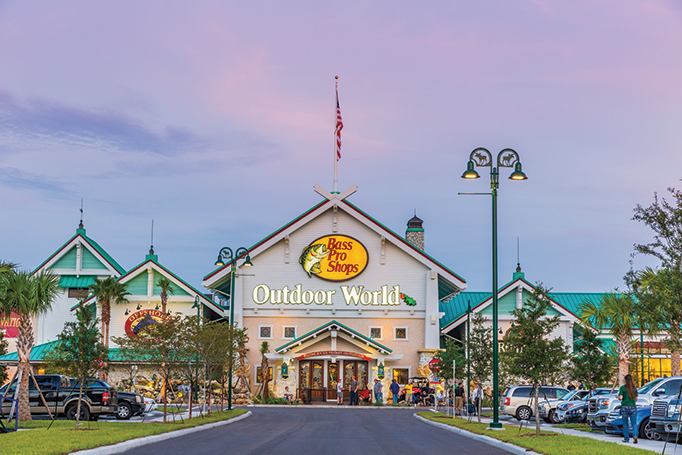
To some topographers, the Tampa–St. Petersburg–Clearwater metro area extends from Sarasota in the south to Crystal River in the north and comprises the second-largest market in Florida. Even with all that geography, though, this market tends to get overlooked because of the headline-grabbing chic of the Gold Coast and tourist-driven Orlando. It should not be. The retail property market in the Tampa metro is “as good as it has been in quite some time,” according to Paul Rutledge, Tampa-based first vice president of CBRE, and ICSC’s Florida operations chairman. “It’s as good as it was during the frothy years of 2005–2006. I’m almost afraid to say how good it is.”
New development has been the biggest boost. Currently, retail property construction totals some 800,000 square feet. “That includes Simon Property Group’s Tampa Premium Outlet mall that opened in the Wesley Chapel area, which is part of the 500-acre Cypress Creek Town Center mixed-used development that will include a lot more retail,” said Lisa McCaffrey, Tampa-based managing director of retail services for Colliers International. Further charging up the market was the 2015 opening of a 132,000-square-foot Bass Pro Shops store, plus a Bealls Outlet taking up almost 30,000 square feet at the City Plaza at Tampa Palms. “Across the board, Costco is expected to do a couple of new locations, Hobby Lobby is looking around, and such brands as Crunch Fitness, Banfield Pet Hospital and Five Below have opened recently,” said McCaffrey.
Among the new restaurants that have already opened, or that plan to open soon, are Orlando-based Jimmy Hula’s, and Jacksonville-based Maple Street Biscuit Company. In the grocery arena, Publix dominates, with Walmart being the No. 2 player. This lineup will probably stand awhile, though the specialized brands have come to town too: Trader Joe’s and Whole Foods have opened stores; Earth Fare signed a lease in the town of Seminole; and Sprouts Farmers Market and Lucky’s are reported to be seeking locations, McCaffrey says. Publix appears set to defend its turf, as the chain is taking space at the Shoppes at Trinity Lakes, in Wesley Chapel, and is committed to some in-fill projects as well.
Even with all this new development, total vacancy sits at 6 to 7 percent, according to Rutledge. As in most markets, new construction in Tampa has bifurcated the retail scene. “The ‘A’ markets, including new developments, are in high demand and vacancies are low at 5 percent or less,” said McCaffrey. “The secondary and tertiary markets are performing just average.” The discrepancies between the two markets can be seen in rental rates, which average $13.50 per square foot across the board, though in high-profile and new properties, rates per square foot rise to the upper-$30-to-low-$40 range.
“It’s an interesting anomaly,” said Rutledge. “Because of the new product, certain rates are going up, yet older spaces go at less value. The older spaces need capital improvement. You pay a lower rent, but you need to invest capital. Some of the new grocery guys are looking for that. We represent Sky Zone [Trampoline Park], which has secondary space requirements. Rent numbers may be low, but the space doesn’t come cheap, because of the improvements.”
No slowdown is expected for 2016. “The pace of new development should continue over the next 12 months,” said McCaffrey. “Rental rates and occupancies will continue to improve.” Rutledge concurs. “A lot of momentum [is] going into the new year,” he said. “2016 will be a mirror image of 2015.”